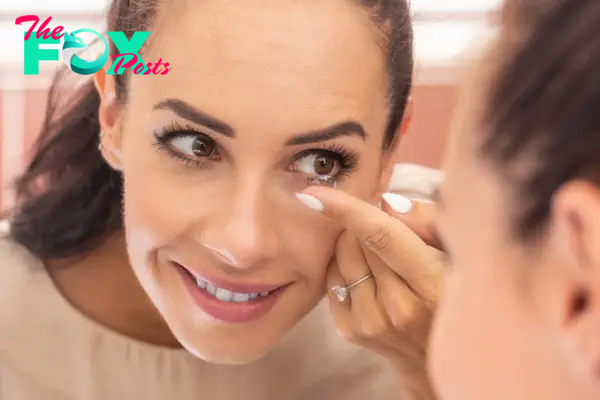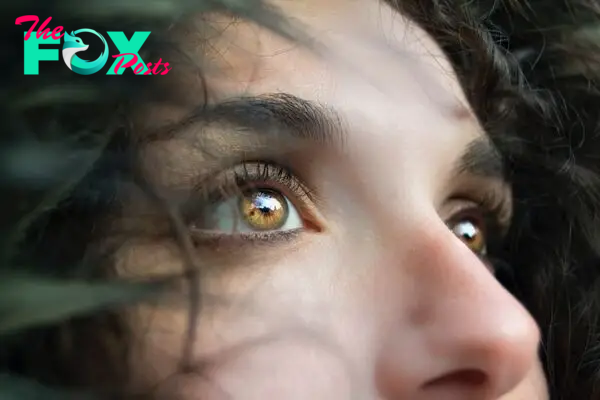Lifestyle
Woman buys abandoned lighthouse and turns it into cozy “nautical” home

Picture owning your very own lighthouse, a majestic beacon overlooking a vast bay, embodying both hope and history.
Sheila Consaul, a 65-year-old aficionado of historic preservation, turned this dream into reality.
For a sum of $71,000, Sheila purchased a derelict lighthouse in Fairport Harbor, Ohio, and embarked on a journey that would see her invest over $300,000 in transforming it into her dream vacation home.

Living in a lighthouse is far from ordinary; solitude greets you at every turn.
Forget about a driveway leading to the front door; instead, you park half a mile away and transport everything you need by hand, from groceries to generator fuel. Yet, the experience, once embraced, is unparalleled.
Sheila’s journey began from her passion for historic preservation and a desire for a unique summer retreat.

Upon discovering that the government was auctioning off lighthouses, she saw an opportunity to merge her interests.
Though the lighthouse she acquired was in a sorry state, with cracked windows and peeling plaster, Sheila remained undeterred.
With the aid of a home equity loan, she embarked on a challenging yet fulfilling renovation project.

Renovating the lighthouse presented numerous challenges; every construction material had to be hoisted by crane and transported by boat due to its remote location.
Furthermore, being entirely off the grid posed additional hurdles; rebuilding the electrical system and relying on a gasoline-powered generator were just a few of Sheila’s tasks.
Despite these obstacles, the transformation is remarkable.

Today, the lighthouse boasts a fully equipped kitchen with granite countertops and modern appliances.
The plumbing and electrical systems have been overhauled, while the once-broken windows now showcase stunning stained glass.
However, preserving its historical essence was equally paramount.

Original features like dark brown floorboards and cast-iron stairs remain intact, alongside innovations such as a rainwater collection system.
Since 2012, Sheila has welcomed guests to the lighthouse, hosting annual open houses and sharing this community treasure with others.
Maintained by the Coast Guard and still serving as a navigational aid, the lighthouse stands as a testament to community and heritage.

Would Sheila embark on this journey again? Perhaps not, but the rewards have been immeasurable.
While she currently has no plans to rent out her unique summer home, she remains open to the possibility.
For now, she revels in the fruits of her labor and the extraordinary experience of lighthouse living.

Sheila Consaul’s story exemplifies what happens when perseverance and passion converge.
She didn’t just acquire a property; she rescued a historical gem, ensuring it endures for generations to come.

Take a virtual tour of the lighthouse in the accompanying video below!
Feel free to share this remarkable tale with your loved ones.
Crucial Techniques for Preventing Infections in Your Eyes

As essential sensory organs, our eyes enable us to see and understand the world around us. Preserving our eyes against dangerous diseases and infections is a crucial part of keeping them in optimal Health and maintaining our eyesight.
Many things, such as bacteria, viruses, allergies, and poor eye care techniques, can result in eye infections. We’ll look at a few key tactics in this post that can help you avoid eye infections and keep your vision intact for years to come.

- Frequent Handwashing: One of the best defenses against eye infections is keeping your hands clean. To get rid of dangerous bacteria and viruses, properly wash your hands with soap and water before handling contact lenses or touching your eyes.
- Avoid Eye Touching: Several surfaces that come into contact with our hands could be home to dangerous microbes. Avoid unnecessary eye touching or rubbing, as it can introduce bacteria and irritants, potentially leading to infections or worsening existing ones.
- Proper Contact Lens Care: Follow your eye doctor’s instructions on proper cleanliness if you wear contact lenses. Unless your eye care specialist instructs you otherwise, clean and sanitize your lenses on a regular basis, replace them when necessary, and refrain from sleeping with them on.
- Eyewear Hygiene: If your glasses or sunglasses come into touch with dust, debris, or bacteria, make sure they are cleaned and sanitized on a regular basis to avoid transferring these elements to your eyes.
- Personal Eye Makeup: By dispersing bacteria and viruses, sharing eye makeup products with others raises the risk of eye infections. Avoid borrowing or lending eyeliner, mascara, or eye shadow, and replace your eye makeup regularly to prevent the buildup of harmful microorganisms.
- Protection in Polluted Environments: Use the proper goggles or eye protection if you reside in or are exposed to extremely polluted environments with irritants like smoke, dust, or chemicals to reduce the risk of injury to your eyes.
- Allergy Awareness:Avoid rubbing your eyes if you are prone to allergies brought on by pollen or pet dander and use over-the-counter or prescription antihistamine eye drops to relieve symptoms.
- Maintain a Healthy Lifestyle: Maintaining optimal eye health requires a diet rich in important vitamins and minerals, especially vitamin A, and well-balanced. Include items like salmon, citrus fruits, carrots, and spinach in your diet. In addition to hydrating your eyes, maintaining adequate hydration lowers your chance of developing dry eye infections.
- Regular Eye Exams: Early detection and prevention of eye infections and other eye-related issues require routine eye exams by optometrists or ophthalmologists. These experts are capable of spotting possible issues and offering insightful advice to protect the health of your eyes.
- Give Your Eyes a Break: To reduce eye fatigue caused by prolonged screen time, follow the 20-20-20 rule—every 20 minutes, look at something 20 feet away for 20 seconds. This easy routine can assist in lowering the incidence of eye infections.

In conclusion, you can successfully prevent infections in your eyes by implementing these simple procedures into your everyday routine. You may preserve clean, clear eyesight by doing frequent eye exams, paying attention to eye care products, and emphasizing excellent cleanliness. To preserve your vision and enjoy the world’s beauty with healthy eyes, always remember that prevention is always better to treatment.
How to Keep Your Eyes Healthy
1. Eat Well
Good eye health starts with the food on your plate. Nutrients like omega-3 fatty acids, lutein, zinc, and vitamins C and E might help ward off age-related vision problems like macular degeneration and cataracts. To get them, fill your plate with:
- Green leafy vegetables like spinach, kale, and collards
- Salmon, tuna, and other oily fish
- Eggs, nuts, beans, and other nonmeat protein sources
- Oranges and other citrus fruits or juices
- Oysters and pork
A well-balanced diet also helps you stay at a healthy weight. That lowers your odds of obesity and related diseases like type 2 diabetes, which is the leading cause of blindness in adults.
2. Quit Smoking
It makes you more likely to get cataracts, damage to your optic nerve, and macular degeneration, among many other medical problems. If you’ve tried to kick the habit before only to start again, keep at it. The more times you try to quit, the more likely you are to succeed. Ask your doctor for help.
3. Wear Sunglasses
The right pair of shades will help protect your eyes from the sun’s ultraviolet (UV) rays. Too much UV exposure boosts your chances of cataracts and macular degeneration.
Choose a pair that blocks 99% to 100% of UVA and UVB rays. Wraparound lenses help protect your eyes from the side. Polarized lenses reduce glare while you drive, but don’t necessarily offer added protection.If you wear contact lenses, some offer UV protection. It’s still a good idea to wear sunglasses for an extra layer.
4. Use Safety Eyewear
If you use hazardous or airborne materials on the job or at home, wear safety glasses or protective goggles.
Sports like ice hockey, racquetball, and lacrosse can also lead to eye injury. Wear eye protection. Helmets with protective face masks or sports goggles with polycarbonate lenses will shield your eyes.
5. Look Away From the Computer Screen
Staring at a computer or phone screen for too long can cause:
- Eyestrain
- Blurry vision
- Trouble focusing at a distance
- Dry eyes
- Headaches
- Neck, back, and shoulder pain
To protect your eyes:
- Make sure your glasses or contacts prescription is up to date and good for looking at a computer screen.
- If your eye strain won’t go away, talk to your doctor about computer glasses.
- Move the screen so your eyes are level with the top of the monitor. That lets you look slightly down at the screen.
- Try to avoid glare from windows and lights. Use an anti-glare screen if needed.
- Choose a comfortable, supportive chair. Position it so that your feet are flat on the floor.
- If your eyes are dry, blink more or try using artificial tears.
- Rest your eyes every 20 minutes. Look 20 feet away for 20 seconds. Get up at least every 2 hours and take a 15-minute break.
6. Visit Your Eye Doctor Regularly
Everyone needs a regular eye exam, even young children. It helps protect your sight and lets you see your best.
Eye exams can also find diseases, like glaucoma, that have no symptoms. It’s important to spot them early on, when they’re easier to treat.
Depending on your eye Health needs, you can see one of two types of doctors:
- Ophthalmologists are medical doctors who specialize in eye care. They can provide general eye care, treat eye diseases, and perform eye surgery.
- Optometrists have had 4 years of specialized training after college. They provide general eye care and can diagnose and treat most eye diseases. They don’t do eye surgery.
A comprehensive eye exam might include:
- Talking about your personal and family medical history
- Vision tests to see if you’re nearsighted, farsighted, have an astigmatism (a curved cornea that blurs vision), or presbyopia (age-related vision changes)
- Tests to see how well your eyes work together
- Eye pressure and optic nerve tests to check for glaucoma
- External and microscopic examination of your eyes before and after dilation
You might also need other tests.
Step into a world dedicated entirely to man’s best friend – dogs. Our website is a treasure trove of heartwarming news, touching stories, and inspiring narratives centered around these incredible creatures. We invite you to join us in spreading the joy. Share our posts, stories, and articles with your friends, extending the warmth and inspiration to every corner.With a simple click, you can be part of this movement.
-

 Lifestyle3h ago
Lifestyle3h agoBrad Pitt’s Daughter Was Shocked When She Shared: When I Was 17, My Dad Didn’t Protect Me And Finally Saw Diddy Pushing Me And Forcing Me To…Linh
-

 Lifestyle3h ago
Lifestyle3h agoKim Kardashian Reacts Strongly After Diddy Leaks Controversial Photos.Linh
-

 Lifestyle4h ago
Lifestyle4h agoAbhishek Bachchan talks about fatherhood after missing daughter Aaradhya's birthday | The Express Tribune
-

 Lifestyle4h ago
Lifestyle4h agoMohini Dey responds to rumours linking her to AR Rahman’s divorce | The Express Tribune
-

 Lifestyle8h ago
Lifestyle8h agoLiam Paynes funeral: One Direction reunites in tragic scenes, new and old lovers bid him farewell in heartbreak see more.cau
-

 Lifestyle8h ago
Lifestyle8h ago“David Beckham Sparks Controversy Explaining Why He Kisses His 11-Year-Old Daughter on the Lips”.ngocchau
-

 Lifestyle9h ago
Lifestyle9h agoRoger Waters sends open message to Bisan Owda | The Express Tribune
-

 Lifestyle9h ago
Lifestyle9h agoWakhri' secures award at Indian film fest | The Express Tribune

















